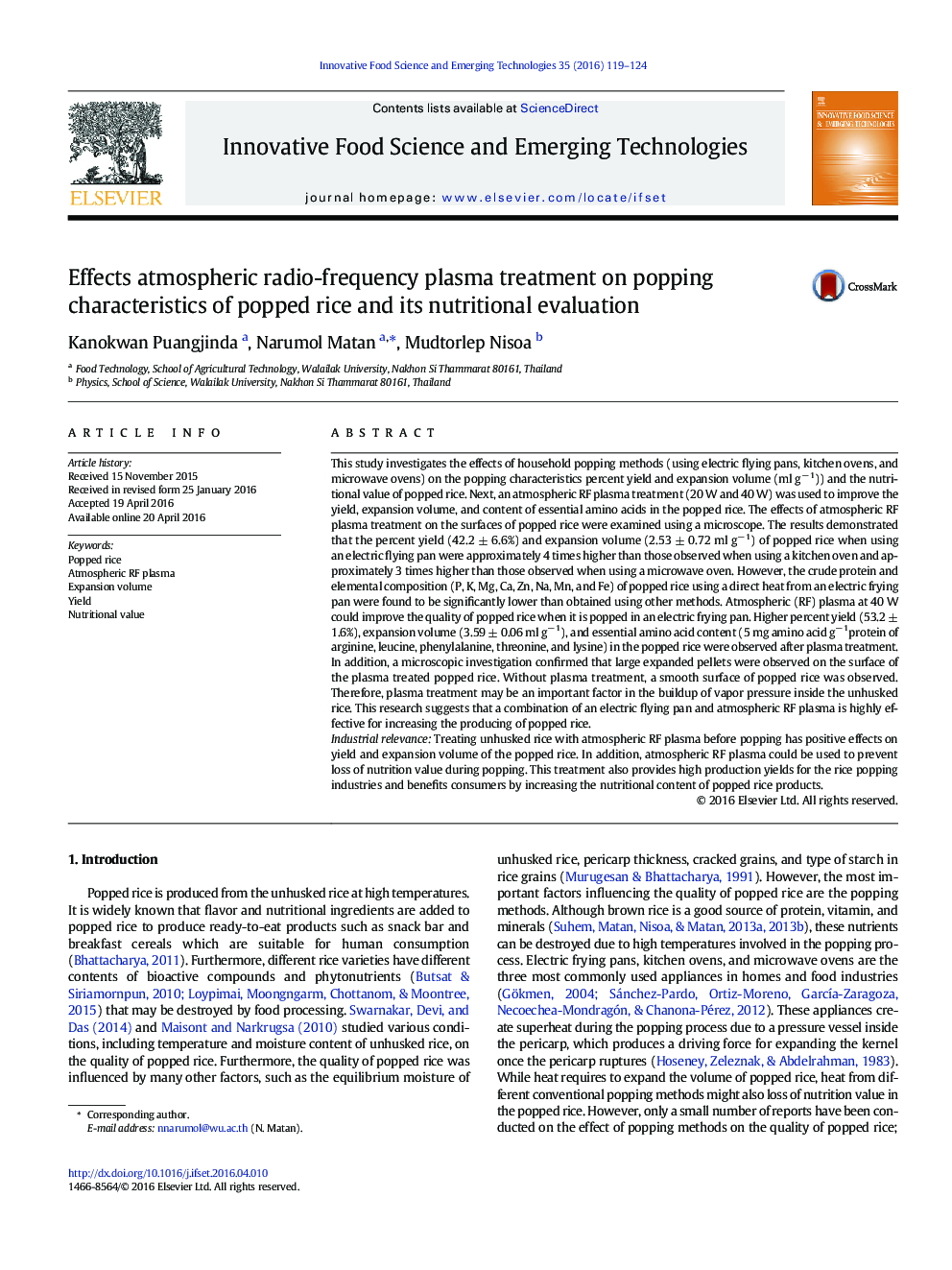| Article ID | Journal | Published Year | Pages | File Type |
|---|---|---|---|---|
| 2086264 | Innovative Food Science & Emerging Technologies | 2016 | 6 Pages |
•First comparison of traditional popping methods on the quality of popped rice is presented.•The atmospheric RF plasma treatment improves the percent yield, expansion volumes nutritional value of popped rice.•As a result of surface plasma treatment there is an increased in wall thickness after expansion in the popped rice.•There is no change in the essential amino acid content after the popping process with plasma treatment.
This study investigates the effects of household popping methods (using electric flying pans, kitchen ovens, and microwave ovens) on the popping characteristics percent yield and expansion volume (ml g− 1)) and the nutritional value of popped rice. Next, an atmospheric RF plasma treatment (20 W and 40 W) was used to improve the yield, expansion volume, and content of essential amino acids in the popped rice. The effects of atmospheric RF plasma treatment on the surfaces of popped rice were examined using a microscope. The results demonstrated that the percent yield (42.2 ± 6.6%) and expansion volume (2.53 ± 0.72 ml g− 1) of popped rice when using an electric flying pan were approximately 4 times higher than those observed when using a kitchen oven and approximately 3 times higher than those observed when using a microwave oven. However, the crude protein and elemental composition (P, K, Mg, Ca, Zn, Na, Mn, and Fe) of popped rice using a direct heat from an electric frying pan were found to be significantly lower than obtained using other methods. Atmospheric (RF) plasma at 40 W could improve the quality of popped rice when it is popped in an electric frying pan. Higher percent yield (53.2 ± 1.6%), expansion volume (3.59 ± 0.06 ml g− 1), and essential amino acid content (5 mg amino acid g− 1protein of arginine, leucine, phenylalanine, threonine, and lysine) in the popped rice were observed after plasma treatment. In addition, a microscopic investigation confirmed that large expanded pellets were observed on the surface of the plasma treated popped rice. Without plasma treatment, a smooth surface of popped rice was observed. Therefore, plasma treatment may be an important factor in the buildup of vapor pressure inside the unhusked rice. This research suggests that a combination of an electric flying pan and atmospheric RF plasma is highly effective for increasing the producing of popped rice.Industrial relevanceTreating unhusked rice with atmospheric RF plasma before popping has positive effects on yield and expansion volume of the popped rice. In addition, atmospheric RF plasma could be used to prevent loss of nutrition value during popping. This treatment also provides high production yields for the rice popping industries and benefits consumers by increasing the nutritional content of popped rice products.
